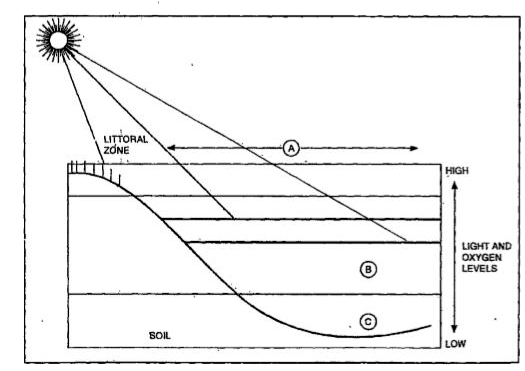What are induced mutations ? Write about physical and chemical mutagens responsible for induced mutations.Solution in Punjabi
Induced Mutations. They are mutations that are produced in response to specific external factors and chemicals. Muller (1927) was the first to produced induced mutations in Drosophila by exposing them to X-rays. The specific factors and chemicals of the environment that induce mutations are called mutagens.
1. Physical Mutagens. They areoftwo types, temperature and high energy radiations
(i) Temperature. Increase in temperature increases the rate of mutations with Q10=5 It is further enchanced at higher temperature. Rise in temperature breaks the hydrogen bonding between the two strands of DNA and hence denatures the latter. It disturbs the synthetic process connected with replication and transcription. In Rice, low temperature is known to increase the rate of mutations.
(ii) High Energy Radiations. They include neutrons, alpha particles, cosmic rays, gamma particles, beta rays, X-rays, ultra-violet rays, etc. Ultra-violet rays are nomonismg radiations which affect DNA by forming thymine dimers. It causes bends in DNA duplex that bring about misreplication. Other high energy radiations are ionising radiations. They ionise DNA constituents that can react with several biochemicals. X-rays are known to dearninate and dehydroxylate nitrogen bases, form peroxides and oxidise deoxynbose Muller (1927, was the first to induce mutations in Drosophila with the help of X-rays. IIc found 1 increasc in the rautations. Radiations emitted by nuclear fall-outs and the atom buinbs dropped over Hirosbima and Nagasaki in Japan have caused many mutations,
2. Chemical Mutagens. They are of several types. The common ones are nitrous acid, alkylating agents, base analogues and acridines.
(i) Nitmus Acid. It is a deaminating agent which changes cytosine to uracil, guanine to xanthine and adicnine o hypoxanthine. Hypoxanthine mispairs with cytosine. Thereforė A-T is replaced by Molecular Basis of Inheritance 193 H-C. Similarly. C-G is replaced by U-A and C-X. These unusual or forbidden base pairs disturb replication and transcription. Incomplete or defective polypep-tides are produced during translation.
(ii) Alkylating Agents. Nitrogen mustards diethyl sulphate (DBS) dimethyl nitrosamine (DMN) and other alkylating agents cause methylation or ethylation of nitrogen bases. The latter fail to pair with normal partners as well as prevent separatic two DNA strands.
(iii) Base Analogues. They resemble the normal bases of DNA and, therefore, get incorporated into DNA in place of them. The common mutagens of this type are 5-bromouracil and 5-fluorouracil. They substitute for thymine of DNA and pair with guanine. Thus A-Tis replaced, by G-Bu or Fu. It disturbs replication, transcription and translation.
(iv) Acridines. They are tar derived heteroaromatic flat molecules from which a number of dyes and pharmaceutical are prepared. Acridines (e.g., acriflavine, proflavine, euflavine, acridine orange) enter the DNA chains in between two base pairs and cause deletion c addition of a few nucleotides. The frame of nucleotide sequence of DNA will disturbed and read differently. It is also known as frame-shift or gibberish mutation.
Topper's Solved these Questions
- MOLECULAR BASIS OF INHERITANCEBOOK - BETTER CHOICE PUBLICATIONCHAPTER - MOLECULAR BASIS OF INHERITANCEEXERCISE - LONG ANSWER TYPE QUESTIONS
8 Videos
- MOLECULAR BASIS OF INHERITANCEBOOK - BETTER CHOICE PUBLICATIONCHAPTER - MOLECULAR BASIS OF INHERITANCEEXERCISE - MOST EXPECTED QUESTIONS
36 Videos
- MOLECULAR BASIS OF INHERITANCEBOOK - BETTER CHOICE PUBLICATIONCHAPTER - MOLECULAR BASIS OF INHERITANCEEXERCISE - MOST EXPECTED QUESTIONS
36 Videos
- MICROBES IN HUMAN WELFAREBOOK - BETTER CHOICE PUBLICATIONCHAPTER - MICROBES IN HUMAN WELFAREEXERCISE - LONG ANSWER TYPE QUESTIONS (MOST EXPECTED QUESTIONS)
2 Videos
- ORGANISMS AND POPULATIONSBOOK - BETTER CHOICE PUBLICATIONCHAPTER - ORGANISMS AND POPULATIONSEXERCISE - LONG ANSWER TYPE QUESTIONS (MOST EXPECTED QUESTIONS)
7 Videos
Similar Questions
Give salient features of human genome.
View SolutionDefine genetic code.
View SolutionDefine genetic code.
View SolutionExplain the role of microbes in the treatment of sewage.
View SolutionThe figure shows zones in the lake.

(i) Label the three zones of the lake A, B and C.
(ii) List the gradients which determine zones in the lake from water surface to bottom of lake.
View SolutionMutations can be artificially induced by exposure of organisms to physical and chemical agents.
Mutation can cause genetic changes in organisms.
View SolutionMutations inducced by mutagenic agents are:
View SolutionHow does a mutagen induce mutation? Explain with example.
View SolutionWhich one of the following is a physical factor that induce mutation ?
View SolutionThe chemical and physical factors that induce mutations are called as
View Solutionउत्परिवर्तन क्या है? स्वजात तथा प्रेरित उत्परिवर्तन का एक-एक उदाहरण लिखिए।
View SolutionWhich one of the following is a physical factor that induce mutation ?
View SolutionMutagens are the substances that induces mutation. Name any two physical and chemical mutagens.
View SolutionHow does a mutagen induce mutation? Explain with example.
View SolutionHow does a mutagen induce mutation ? Explain with example.
View SolutionHow does a mutagen induce mutation ? Explain with example.
View Solution
